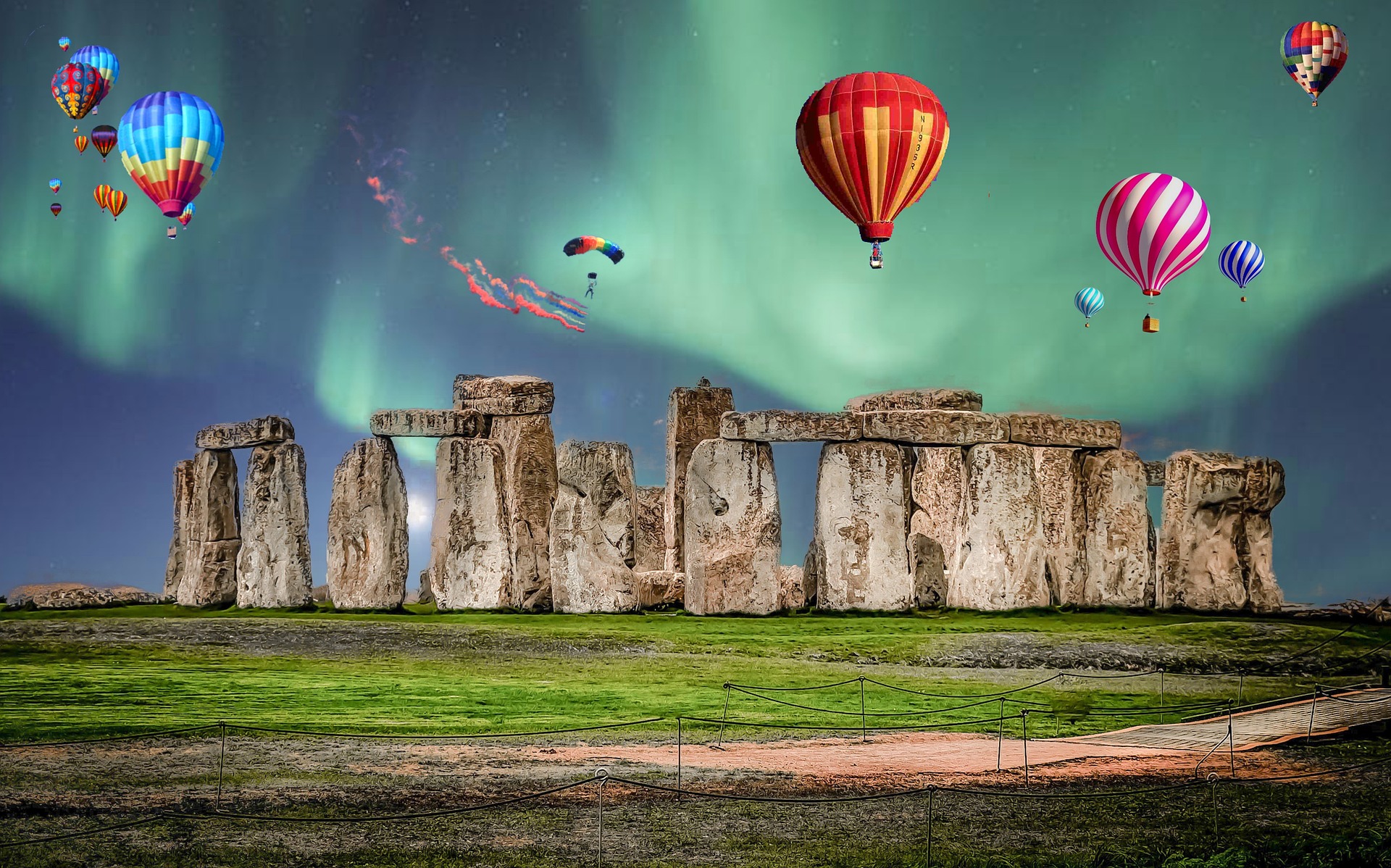
Stonehenge is a prehistoric monument located in Wiltshire, England, about 8 miles (13 kilometers) north of Salisbury. It is one of the most famous and iconic archaeological sites in the world. Stonehenge is known for its circular arrangement of standing stones, each around 13 feet (4 meters) high, 7 feet (2.1 meters) wide, and weighing around 25 tons on average.
Key features of Stonehenge include:
- Stone Circle: The main component of Stonehenge is the outer ring of standing stones, known as sarsens, which are capped with lintels. Inside the circle is a horseshoe arrangement of smaller bluestones. The exact purpose and method of construction of Stonehenge remain subjects of scholarly debate.
- Avenue and Processional Way: Stonehenge is aligned with the solstices, suggesting some astronomical significance. A processional way, known as the Avenue, leads from Stonehenge to the River Avon.
- Trilithons: The inner horseshoe is composed of larger trilithons—two vertical stones supporting a horizontal lintel.
- Bluestones: The smaller bluestones are believed to have been transported from the Preseli Hills in Wales, which is approximately 150 miles (240 kilometers) away. The means by which these stones were transported and erected is still a matter of speculation and study.
- Construction Periods: Stonehenge was built in several phases over the course of at least 1,500 years. The first phase, around 3100 BC, involved the construction of a circular earthwork enclosure. The standing stones were added later, during the Bronze Age.
The purpose of Stonehenge is not definitively known, but various theories suggest that it may have served as a burial ground, a place of religious or ceremonial significance, or an astronomical observatory. Its alignment with the solstices has led to speculation about its use in ancient calendrical or astronomical calculations.
Stonehenge is a UNESCO World Heritage Site and attracts millions of visitors each year. It continues to be a subject of fascination and study for archaeologists, historians, and tourists interested in ancient history and mysteries.